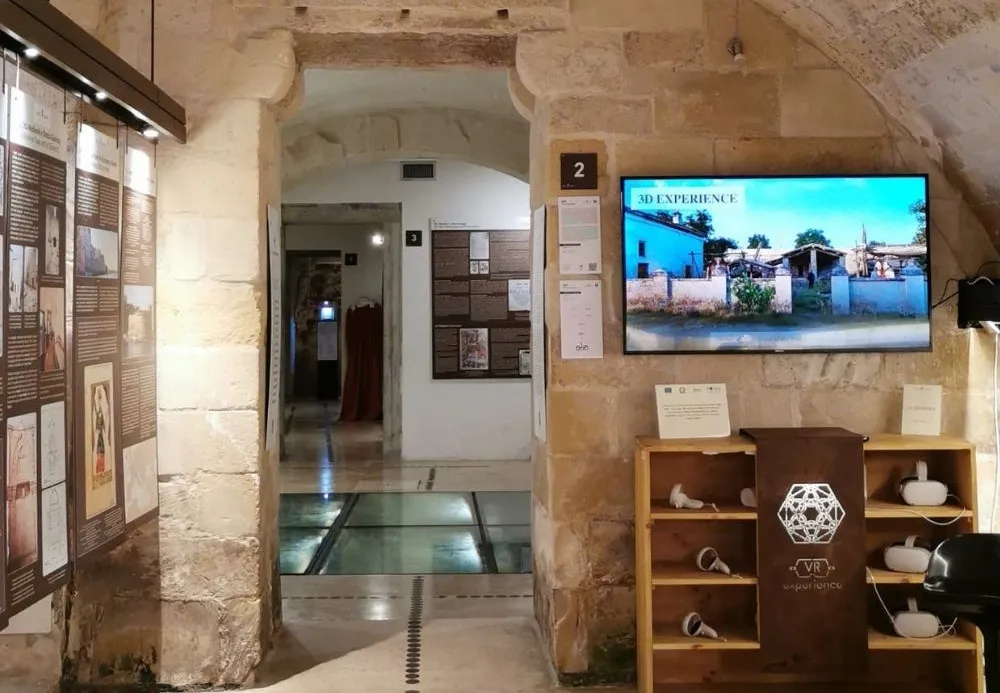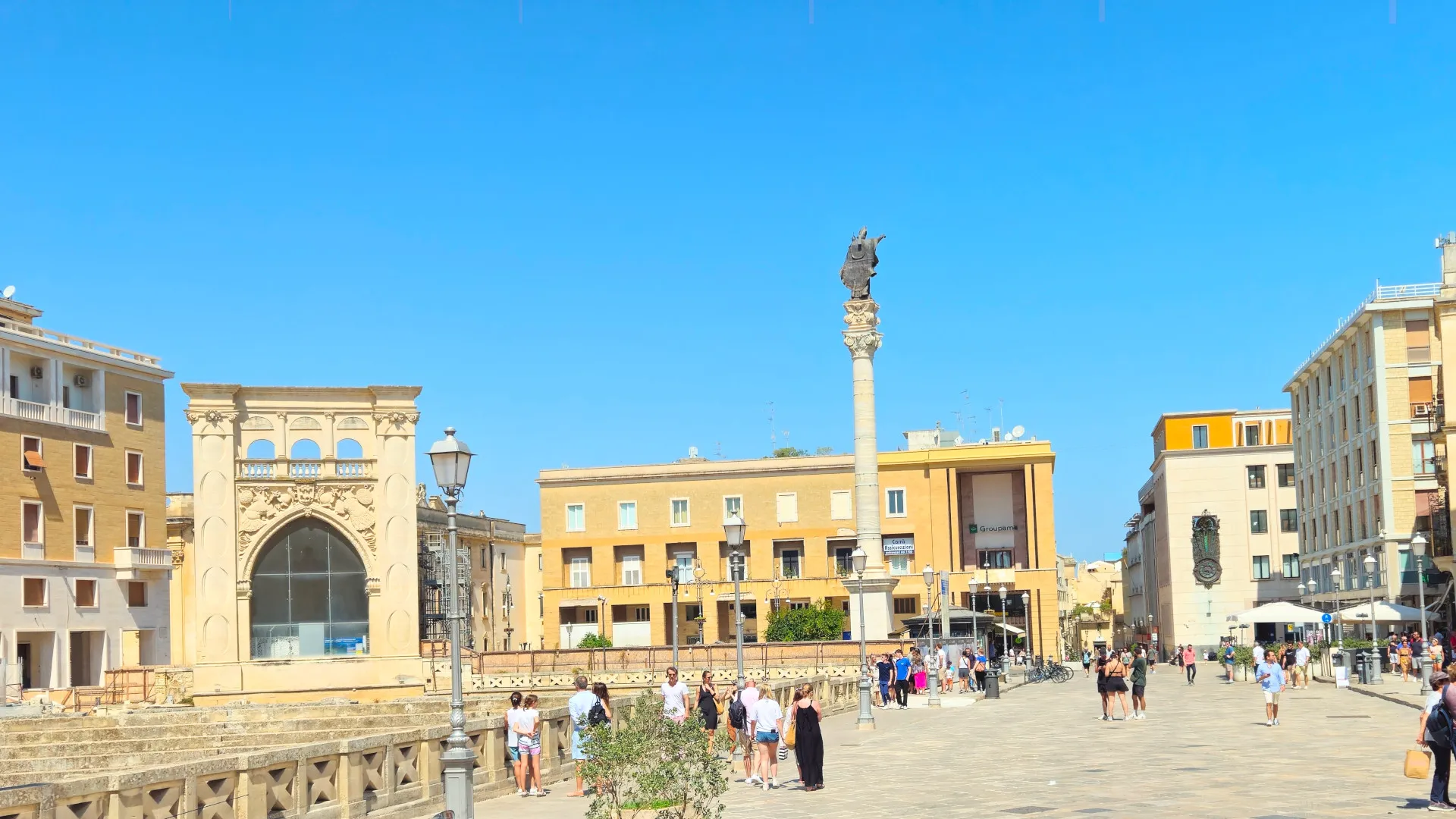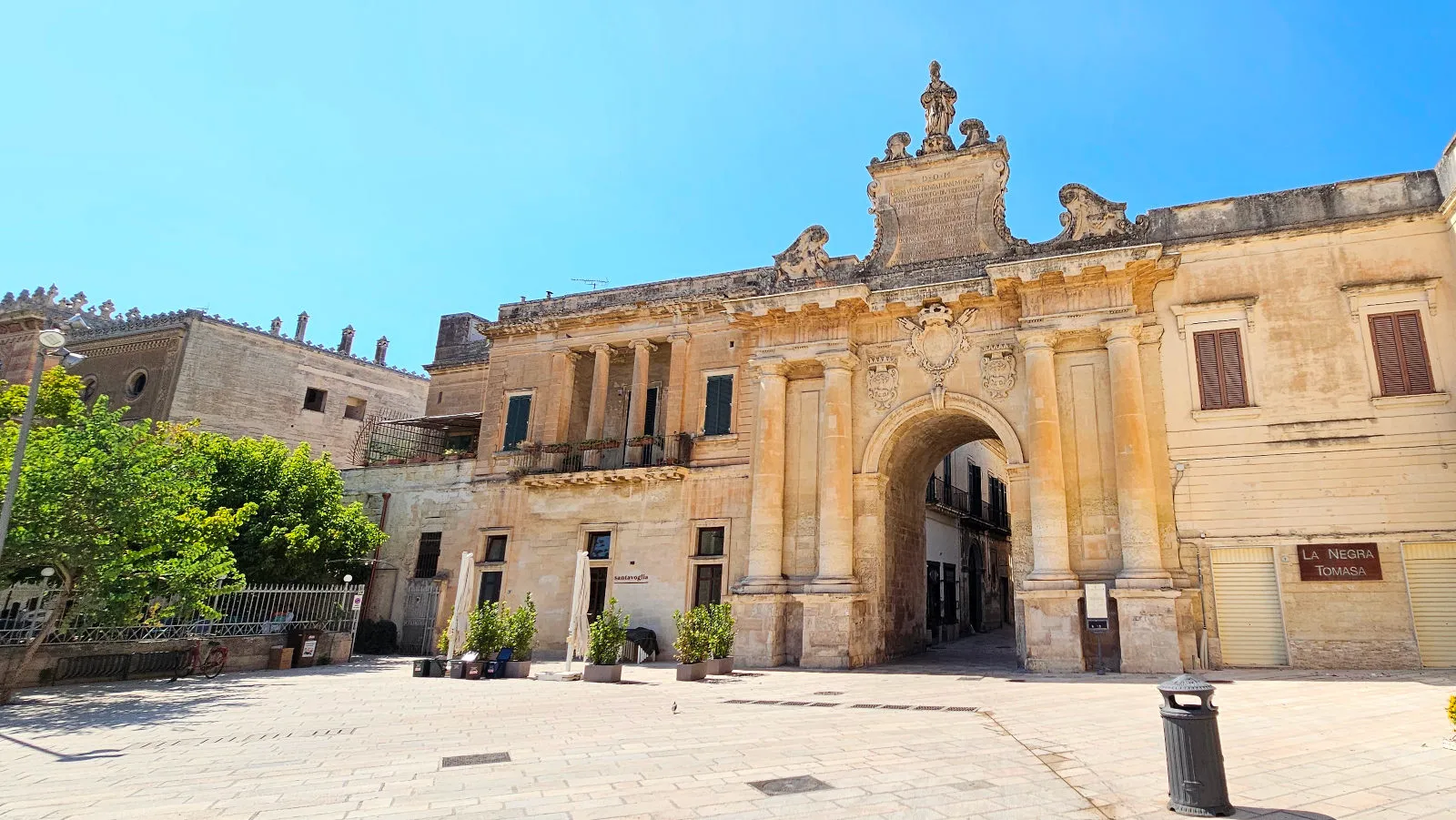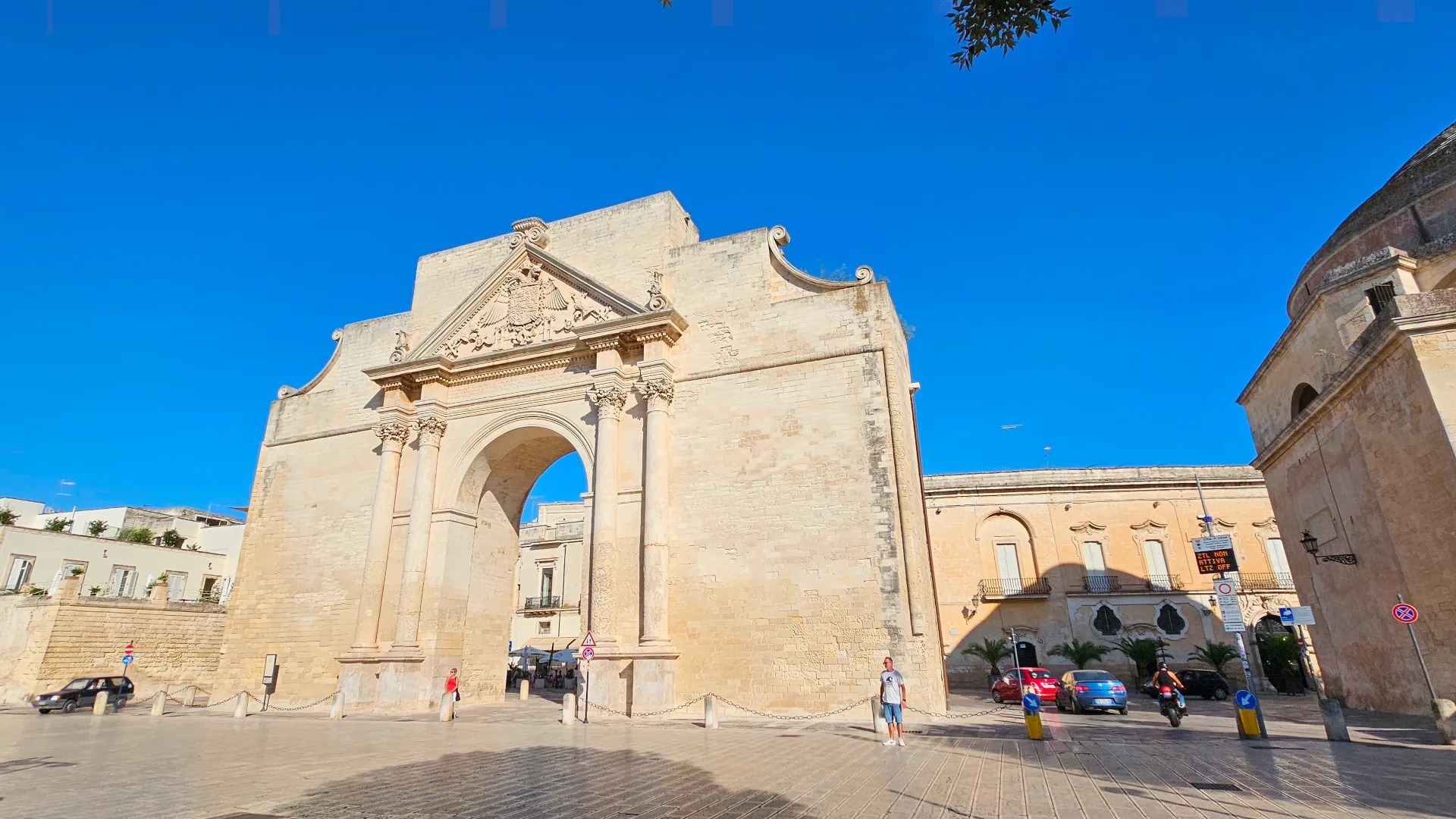Bauxite Cave the nicest landscape of Salento
Updated at: 25-01-2025
How this content can help you:
- The history of the Bauxite Quarry and the formation of the Bauxite Lake
- The unique characteristics of the landscape and its extraordinary colors
- How to reach the Bauxite Quarry from Otranto
- Activities to do, including trekking routes to Punta Palascia
- The beaches and points of interest nearby
- Where to stay, such as in typical local masserie
- The local flora, particularly the Mediterranean scrub
- Information about the possibility of bringing dogs to the quarry
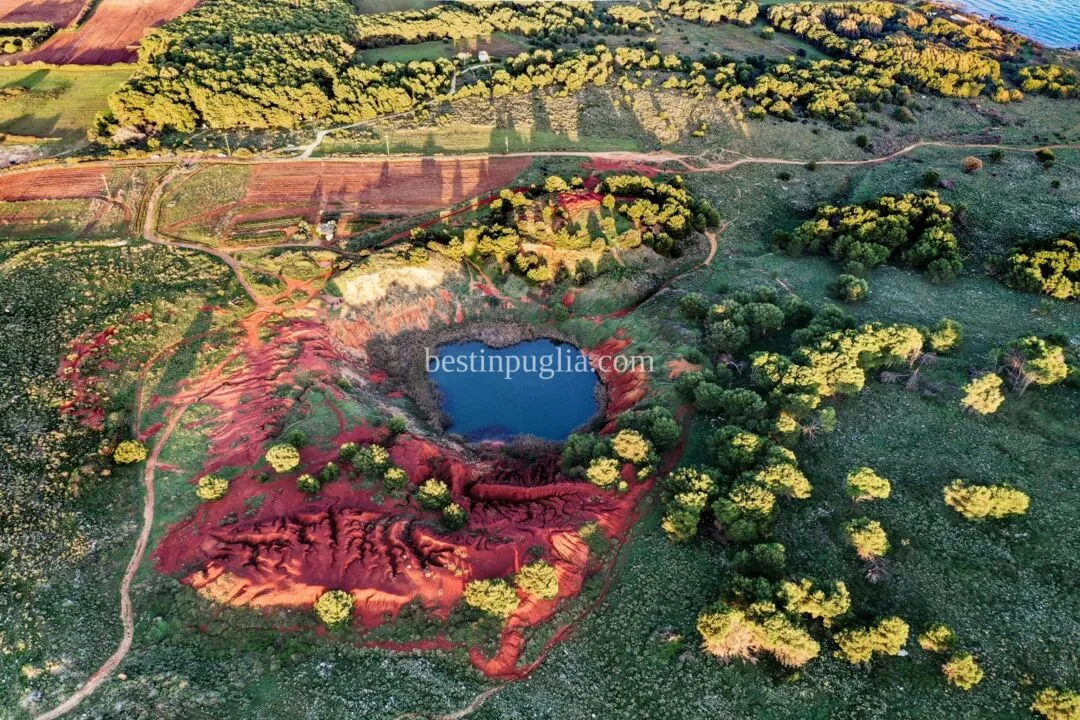
The Cava di Bauxite of Otranto is a unique naturalistic environment, located a few kilometers south of Otranto. The Bauxite Quarry was discovered in the 1940s. In those years Prof. Liborio Salomi found a mineral belonging to the quarry. Only twenty years later was it made official by the engineer Camillo Crema.
During the sixties and up to the mid-seventies, Bauxite from Otranto was extracted and shipped by sea to Maghera. Currently in this huge crater, thanks to the presence of a water table, a small perennial freshwater mirror has originated, hence the name of Lake Bauxite.
This picturesque two-tone union between the emerald green of the water and the rusty red of the gullies dug by the meteoric rains, represents not only the reference point for numerous animal species, but is also an example of a natural remedy for human intervention.
The Cava di Bauxite in Otranto is the manifesto of the force of nature that reclaims the territory exploited by humans for decades and transforms it into a science fiction film show.
Visiting the quarry it seems to be catapulted into an alien landscape because of the strong contrast between the desolate landscape that surrounds the quarry, typical of the Mediterranean scrub and the Adriatic coast of Salento, with the fiery red color of the quarry walls and the emerald green of the lake inside.
The lake of Cava di Bauxite, also known as "Red Lake" from the fiery red color of the rocks that formed it naturally, due to the infiltration of water from one of the karst aquifers present in the area, later to the abandonment of the bauxite mining activities in the late 1970s.
The fiery red rocks around the quarry are now used by local artisans, respecting nature, to create colors to be used in their works.
How to get to the Cava di Bauxite in Otranto
To reach the quarry, take the Otranto coast road, towards the south, for about 5 km to then take a dirt country road, not indicated by road signs, which leads to the quarry.
One of the references to reach the quarry easily can be to head towards the Masseria dei Monaci, outside of which there is the parking reserved for visitors to the lake of the Cava di Bauxite, and from the parking lot walk for 300 meters along the path in clay that leads to the lake.
Even today, the Cava di Bauxite is an area freely open to the public but little known to most as it is not yet indicated on the maps of tourist guides, nor is it offered as a destination by on-site excursion organizers.
You can find the exact location of Bauxite Cave (Cava di Bauxite) and other nearby places using our Italy Puglia map
What to do at the Cava di Bauxite in Otranto
Going to visit the Cava di Bauxite in Otranto will allow you to admire the wonders of the landscape exploited by the human being and regenerated by the force of nature in a luxuriant and unique environment.
Taking a holiday trip to Puglia to visit the Cava di Bauxite in Otranto will allow you to have at your fingertips all the best that Salento can offer you.
The beaches near the Cava di Bauxite in Otranto
The sea is only 500 meters from the quarry with free beaches or lidos.
The Orte beach is the closest one, a few minutes walk, a little further north the beach of Porto Grande just 1 km away.
Not far from the Cava di Bauxite area, perhaps moving by car or motorbike, you can easily reach other wonderful places on the nearby coast:
- the Scaloni beach at 2.2 km
- the Castellana Beach 2.9 km
- the beach of Porto Badisco at 5 km
- to Baia dei Turchi beach at 8 km
- the Alimini Beach at 8 km
Things to do near the Cava di Bauxite in Otranto
€ 130
€ 160
La Cava di Bauxite is located just 5 km from Otranto, a well-known architectural jewel built on the sea, and about 40 minutes by car from Lecce, known for the typical Lecce Baroque style of the perfectly preserved structures of its historic center.
If you decide to stay in the countryside in one of the wonderful Masserie in Otranto you can enjoy the quiet of the Salento countryside and visit the ancient structures or the testimonies in the territory of the presence of the ancient peoples who first populated the area, the Messapians, then passing through the domination Roman, Norman, Aragonese to gradually reach the present day and the preservation of structures and culture handed down by generations.
Among the interesting things to see in the Cava di Bauxite area in Otranto are:
- Cathedral of Otranto and Aragonese Castle at 1.7 km
- the Port of Otranto Porto at 1.9 km
- Torre Santo Stefano at 1.4 km
- Bay of the Water Mill and Grotta Sfondata 10 km
- Zinzulusa cave at 14.3 km
- Roca 18.6 km
Where to stay near the Cava di Bauxite in Otranto
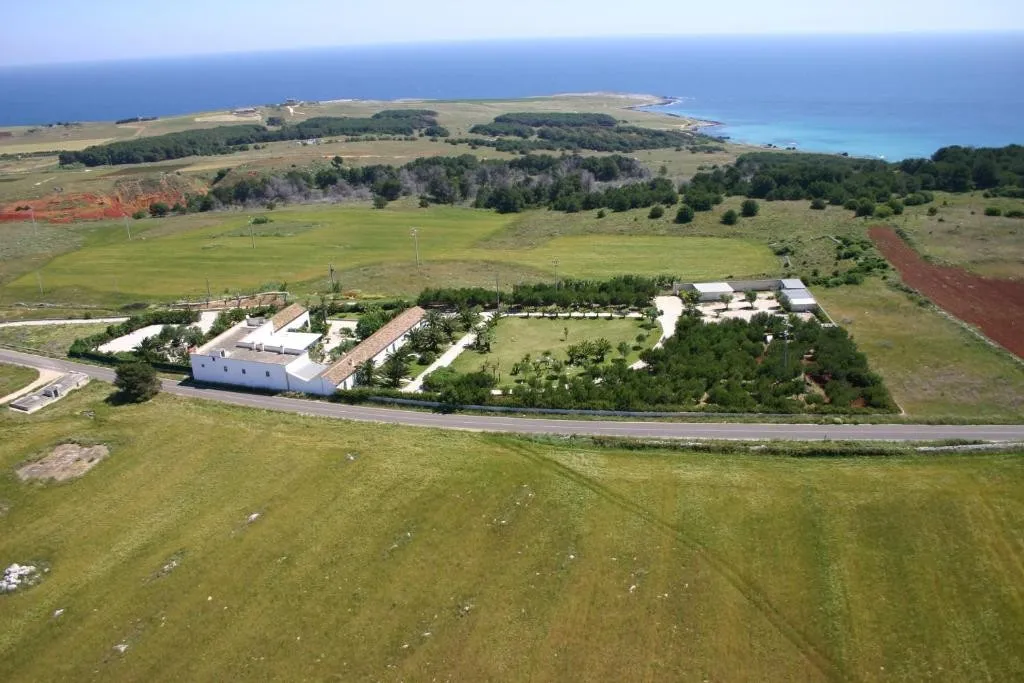
One of the best accommodation opportunities that the Apulian territory offers to tourists who come to visit Salento are the Masserie, the ancient structures where the farmers and the owners of the land stayed during the period of processing and harvesting of the agricultural products they worked ( mainly vegetables, wheat, olives and vineyards).
Around the Cava di Bauxite you will find different types of hotels and accommodations, including the best farms in the Otranto area, which are distinguished by the type of services and the place where they are located.
Depending on the type of holiday you want to spend in Puglia, you can choose between farms near the sea, farms for families, farms with swimming pool, resort farms, farms with wellness centers or farms with farmhouses.
The best place to spend your holidays by the sea near the Bauxite quarry is Masseria dei Monaci, located just 300 meters away from the lake of the bauxite quarry and a few steps from the sea.
Bauxite Quarry: A Marvel Immersed in Mediterranean Scrubland
The Mediterranean scrubland at the Bauxite Quarry is characterized by vegetation consisting mainly of evergreen shrubs. These plants are xerophilic, adapted to survive in high drought conditions, and have rigid and leathery leaves.
It's challenging to give a definitive description of the Mediterranean scrubland due to its variability in both structural characteristics (height and density of shrubs) and its floristic composition.
This extreme polymorphism is partly due to the type of substrate on which the scrubland establishes itself, and partly due to local climatic and topographical factors. However, it is mainly human activities (cutting, burning, grazing) that significantly shape the appearance of the Mediterranean scrubland.
The Mediterranean scrublands can vary in floristic composition and structural development:
- High Scrubland
- Low Scrubland
High Scrubland
The vegetation of the upper layer is primarily composed of species with almost tree-like growth, with canopies reaching up to four meters in height.
Representative species in this scrubland include those from the "Quercus" genus, the "Phillyrea" genus, "Arbutus Unedo," some species from the "Juniperus" genus, and the "Lentisco."
Low Scrubland
The vegetation of the upper layer is mainly composed of shrub-like species, with canopies reaching a maximum height of two to three meters.
The floristic composition may include species from the "Garrigues," such as "Tree Spurge," "Brooms," and other shrubby plants like "Cistus" and "Rosemary."
Can you bring dogs to the Bauxite Quarry?
Yes, you can bring dogs to the Bauxite Quarry. However, it's always important to keep in mind the regional limitations where applicable.
Reviews on Bauxite Cave the nicest landscape of Salento
1 reviews

